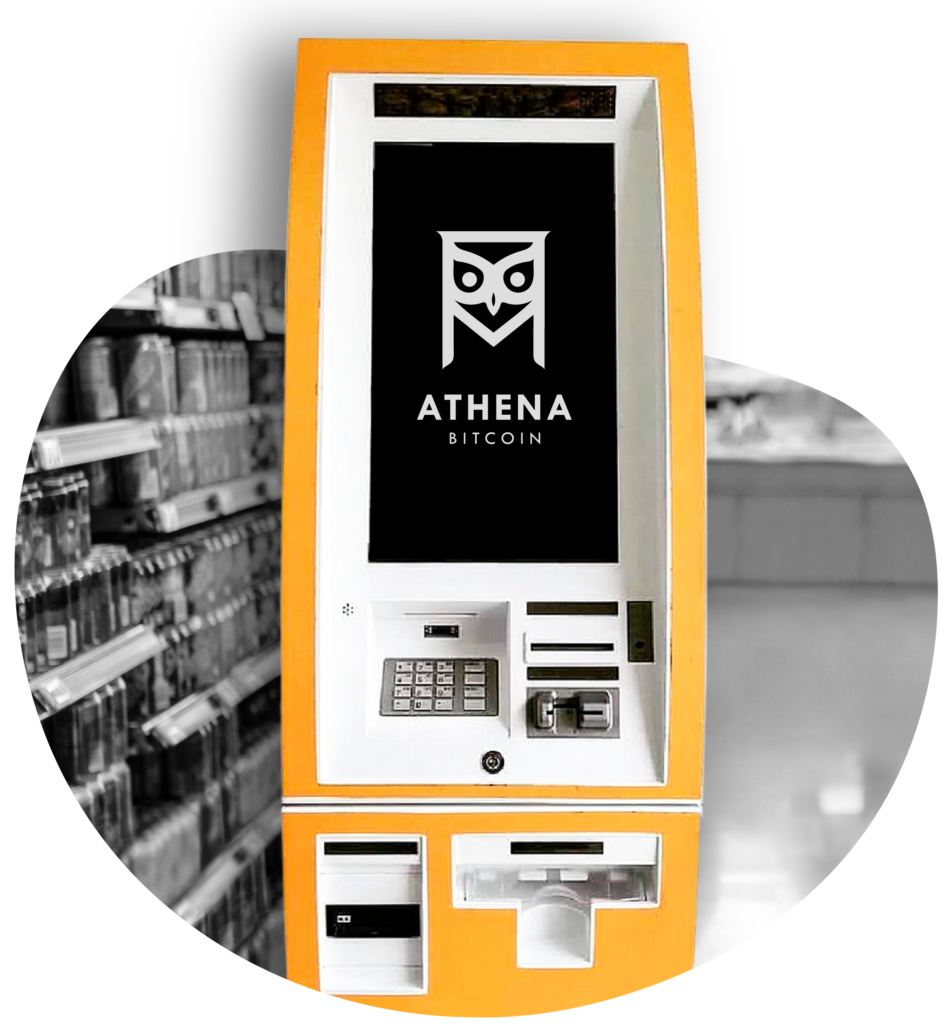Good morning, everybody. It’s Thursday, September 25, 2025. I’m Matt, and if we can actually get this one done in under 15 minutes, I’ll buy myself a celebratory coffee. Yesterday’s show felt like a palate cleanser for both of us. This weekend we’re dropping a special on quantum computing: what it is, how close we really are, and the realistic paths to protect Bitcoin.
Alright—let’s get into it.
Athena Bitcoin vs. AML: Source Code Drama and a Side of AG Heat
Athena Bitcoin, one of the biggest U.S. Bitcoin ATM operators, is in the legal crosshairs. An Illinois-based firm, AML, says Athena stole its copyrighted source code. The complaint claims Athena teamed up with Jordan Merch and Taproot Acquisition Enterprises to misappropriate AML’s software while scooping up 2,800 ATMs from S&P Solutions (which was already banned from operating in Ohio). According to AML, Athena walked away from a licensing deal, hired one of AML’s developers under false pretenses, and then—poof—the disputed code ends up on the machines.
Adding spice, Athena recently announced a $9 million settlement with Taproot that supposedly handed over the ATM source code. AML says, “not so fast,” insisting it never authorized any transfer. The market gave Athena’s stock a little sugar bump on the news (up about 5%), but let’s not ignore the bigger trend—it’s still down 84% year-to-date.
Meanwhile, Washington, D.C.’s Attorney General is separately suing Athena, accusing it of profiteering off elderly scam victims and hiding fees as high as 26%. On the Hill, Senators Cynthia Lummis and Kirsten Gillibrand are pushing market structure reforms—so expect the regulatory microscope to keep zooming in on anything that looks consumer-hostile.
Rollup Reality Check: L2s May Be Mispricing Your Small Transactions
A fresh study from ZK Security, ProofLab, and Imperial College London says many Ethereum Layer 2s are getting the “little stuff” wrong. Rollups like Arbitrum, Optimism, zkSync Era, Scroll, and Polygon zkEVM bundle user transactions to settle on Ethereum, but their fee models often flatten three distinct costs—computation, data availability, and proof verification—into something too simple. That can overcharge small users, leave gaps for cheap spam, and even allow refund mechanisms to be gamed.
Important nuance: the paper isn’t calling out catastrophic code bugs—it’s highlighting flawed economic design and incentive alignment. The recommendation is a multidimensional pricing model that accounts for resources separately, plus dynamic adjustments and partial batching. With billions secured on these networks, the message is basically: fix the incentives before growth makes the pain unavoidable.
Ohio Turns the Crypto Spigot On
The Ohio State Board of Deposit unanimously approved a vendor to process crypto payments—think stablecoin-friendly rails that actually fit how businesses move money today. If you’re a company holding real float in USDC/USDT for inventory or cross-border settlement, being able to pay fees or taxes directly in stablecoins reduces off-ramp friction. That’s a win.
The state is also leaning into broader crypto adoption. The House passed the Blockchain Basics Act to stop local bans and to exempt sub-$200 transactions from capital gains. There’s support for House Bill 18, which would create an Ohio strategic crypto reserve, aligning with the national push to make America the crypto capital. My advice to individuals paying taxes in Bitcoin? Unless you’ve got BTC just jingling in the couch cushions, maybe… don’t. Businesses with stablecoin treasuries? Different story.
The Real Adoption Story Isn’t on Wall Street
If you want to see crypto that matters today, look where it solves survival problems. In Argentina, triple-digit inflation drives people into stablecoins to pay rent and buy groceries. In Nigeria, crypto powers remittances and trade, eating the fees of legacy transfer services. In the Philippines, over a million merchants accept digital currency via mobile wallets. Regulators in these markets are building sandboxes and licensing frameworks because their citizens need the tools.
We’ve talked for a decade about remittances and banking the unbanked; what’s changed is the device layer. A cheap phone in 2025 outclasses a flagship from 2015. Better screens, usable apps, decent security—suddenly the “crypto for everyday life” stack actually works. The next billion users aren’t waiting for another ETF; they want low-cost corridors, seamless on-ramps, and mobile-first tools that keep value intact.
Bitcoin v30, OP_RETURN, and the Never-Ending Identity Debate
Bitcoin Core’s upcoming v30 (expected in October) removes the 80-byte cap on OP_RETURN—the field used to embed arbitrary data in transactions—and the community is back in “What is Bitcoin?” mode. Supporters say it’s neutral and consistent with what miners already accept; let fee markets decide. Detractors worry about bloat, node costs, and even the chilling possibility of illicit content being permanently etched into the chain.
The “money-first” camp is leaning into stricter relay policies via alternatives like Luke Dashjr’s Bitcoin Knots, whose node count has surged this year. Core devs say decisions are open and process-driven; critics hear “corporate capture.” Underneath the technicals, this is classic governance by exit and voice: miners, node operators, and businesses will signal with their software and their economic activity. It’s messy—but this is what a decentralized “democracy” looks like.
Jameson Lopp adds an important wrinkle: while the spam/filters/Knots debate has been simmering for a decade, what’s striking today is not the arguments themselves—they’re well-worn—but Luke Dashjr’s success in convincing a non-trivial number of operators to run Knots. That shift raises uncomfortable questions because, unlike Core, Knots has only one maintainer. Lopp details Luke’s long trail of security mishaps, questionable code-handling practices, and authoritarian-leaning beliefs that have left him alienated from much of the Core dev community. The concern is less about OP_RETURN itself and more about whether a single controversial figure should wield disproportionate influence in client diversity.
That’s the backdrop: not just a debate about data in blocks, but about who holds the pen, how much trust we place in process vs. personalities, and what “rough consensus and running code” really means in Bitcoin’s next chapter.
See more from him in:
https://blog.lopp.net/knot-a-serious-project/?ref=cypherpunk-cogitations-newsletter
Why Bitcoin’s Lagging Stocks (for Now)
Gold and U.S. equities hit new highs while Bitcoin lagged, and analysts chalk it up to four things: rate cuts channel liquidity into gold and stocks first; stablecoin reserves are parked off-exchange instead of rotating into BTC/ETH; leverage is leaning toward hedges rather than fresh spot; and crypto historically runs after TradFi cools. Add in QT, Treasury supply, and a fat options expiry, and yeah—headwinds. But structurally, rising global liquidity tends to find crypto with a lag. Keep an eye on the next 30–90 days once rotations start.
Liquidations, Aster Whiplash, and the Mood
Rough session: ~$442 million liquidated in 24 hours, with ~$377 million from longs as BTC, ETH, and SOL led the slide. Aster gave back ~13.5% on the day with about $13 million in liquidations—but it’s still one of the few top-100s green on the week. The RSI says oversold across a lot of majors. Fear & Greed is neutral. My gut: this sort of downdraft doesn’t sustain forever. Not financial advice—just pattern memory.
Crypto Prices
Time: 9:21 a.m. ET — Fear & Greed: 41 (Neutral)
Bitcoin: $111,518 (−1.4% 24h, −5% 7d)
Ethereum: $4,000 (−4.3% 24h, −12.7% 7d)
XRP: $2.84 (−1% 24h, −8.8% 7d)
BNB: $993 (−2.2% 24h)
Solana: $200 (−5.4% 24h, −~20% 7d)
Dogecoin: $0.231 (−4.8% 24h, −18% 7d)
Tron: $0.332 (−1.7% 24h, −4% 7d)
Cardano: $0.79 (−3.9% 24h, −14% 7d)
Total market cap sits at $8.3T—yeah, roughly $200B out the door overnight—BTC at $2.2T, ETH at $483.2B.
That’s the show. I’ll see you tomorrow.
Until then, happy hodling, everyone.
⚖️ Athena Bitcoin ATM Operator Accused of Stealing Copyrighted Source Code
🔗 Ethereum Layer-2 Rollups Misprice Small Transactions, Study Warns
🏛️ Ohio Moves to Accept Crypto Payments for State Fees
📊 4 Reasons Why Bitcoin Is Failing to Copy All-Time Highs of Gold and Stocks
❓ What’s Wrong With the Crypto Market?
🛠️ Bitcoin Upgrade in the Works From Core Developers
💥 Crypto Market Liquidations Top $442M as BTC, ETH, SOL Dip
Self Custody Crypto Roth IRA:
http://athenic.xyz/
Use Code “DCN” for $30 off: DCN
📉 Trader Cobb & Market Training via The Grow Me Co


















